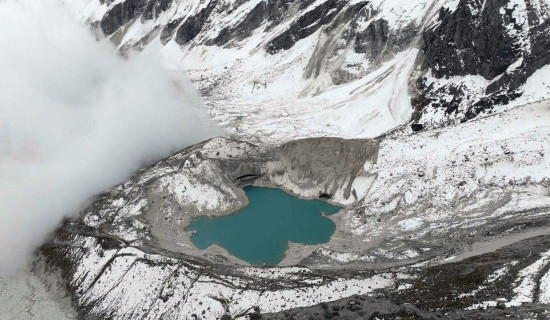- Friday, 17 October 2025
Blazing Forest Fires
Pallav Bhusal
In the tranquil landscapes of Nepal, where the lush greenery of forests paints a picturesque scene, lies a sinister threat that not only undermines the natural beauty but also devastates lives and livelihoods – forest fires. As a resident of Nepal, I have witnessed first-hand the cataclysmic consequences of these infernos, particularly during a harrowing experience in the Arghakhanchi district. The scenes of destruction and despair etched in my memory serve as a poignant reminder of the urgent need to address the alarming rise of forest fires in Nepal.
Nepal, with its rich biodiversity and pristine wilderness, is home to diverse ecosystems that support countless species of flora and fauna. However, the increasing frequency and intensity of forest fires pose a grave threat to this ecological treasure. The Arghakhanchi district, once a haven of natural splendour, turned into a scene of devastation when a raging inferno engulfed vast expanses of forestland. The flames, fuelled by dry vegetation and fanned by gusty winds, spread rapidly, leaving a trail of destruction in their wake.
The impact of forest fires transcends beyond the boundaries of the wilderness, engulfing human settlements in their path of destruction. Witnessing numerous houses succumb to the relentless advance of the inferno was a heart-wrenching experience. Families displaced, livelihoods lost, and communities shattered – the toll exacted by these fires is immeasurable. The scars left behind serve as a stark reminder of the vulnerability of human habitation to the wrath of nature.
One of the most alarming aspects of forest fires in Nepal is their increasing frequency and severity, exacerbated by a combination of factors including climate change, deforestation, and human activities. Rising temperatures and erratic weather patterns create conducive conditions for the ignition and spread of fires, while deforestation further amplifies the vulnerability of forested areas. Moreover, human activities such as agricultural burning and irresponsible disposal of cigarettes exacerbate the risk, turning a spark into an uncontrollable blaze.
The consequences of forest fires extend beyond immediate destruction, posing long-term environmental and socio-economic challenges. The loss of biodiversity, degradation of ecosystems, and depletion of natural resources undermine the ecological resilience of the affected areas, perpetuating a cycle of vulnerability. Moreover, the economic ramifications of forest fires are profound, with communities reliant on forest resources for their livelihoods bearing the brunt of the devastation.
Addressing the scourge of forest fires in Nepal demands a multi-faceted approach that encompasses both prevention and mitigation strategies. Enhancing early warning systems, investing in fire detection and suppression technology, and promoting community-based forest management initiatives are crucial steps in building resilience against forest fires. Furthermore, raising awareness about the importance of forest conservation and sustainable land management practices is essential in fostering a culture of stewardship towards our natural heritage.
As a witness to the ravages of forest fires, I urge policymakers, stakeholders, and communities to prioritise concerted efforts towards mitigating this pressing threat. The lessons learned from experiences such as those in the Arghakhanchi district serve as an immediate call for action. We cannot afford to remain complacent in the face of such devastation, the future of our forests and our communities depends on our collective resolve to safeguard them from the destructive forces of fire.
















